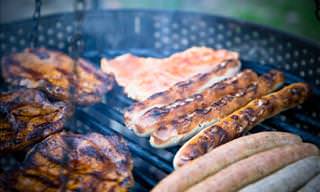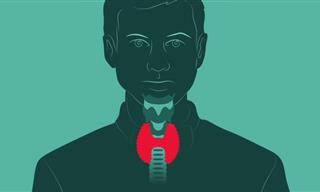Not every diet is meant for weight loss, with some being designed to help people avoid foods that cause them unnecessary suffering, such as a diet for those who are sensitive to lactose or a diet for those who are sensitive to gluten.
One such type of diet is the FODMAP diet, which is named after the existing carbohydrate group in foods that are specifically prohibited for consumption. The goal of this diet is to relieve those suffering from irritable bowel syndrome and a regular feeling of swelling in the abdomen. If you suffer from such problems, it is highly recommended that you familiarize yourself with the FODMAP diet and its course, including what foods are allowed and which should be avoided.

Why do FODMAP foods cause such stomach discomfort?
FODMAP carbohydrates, such as fructose, lactose, and sorbitol are "suspect" because they are difficult for the intestines to absorb and cause many fluids to accumulate in them. In addition, these carbohydrates stay in the intestines longer, and our good bacteria break them down in a process which causes them to ferment, resulting in bloating, gas and even diarrhea.
How does the low-FODMAP diet work?
During the FODMAP diet, foods that contain FODMAP carbohydrate are removed from the diet for 4-8 weeks, followed by moderate and gradual consumption, and trying to determine which of them are causing the problematic symptoms and which are not. It is a slow process that includes adding one of the foods that are forbidden to the diet for a few days, examining how the body responds and deciding whether to continue or stop consuming it. When you find out what foods make you suffer from a feeling of discomfort, you can avoid them completely, and thus get rid of the unpleasantness once and for all.

Is this diet right for me?
Usually, the FODMAP diet is for people with severe gastrointestinal problems, the most common problem being irritable bowel syndrome, but also Crohn's disease and ulcerative colitis. This diet can also be effective for people suffering from celiac disease who haven’t experienced relief even after omitting gluten from their diets.
So what about people who occasionally suffer from bloating? There is nothing to prevent you from trying this diet to avoid the sensation and to find out what foods are causing it, but you should consult a dietitian so you can know exactly which foods to remove because not all of the foods listed below are forbidden for you. However, this diet can only help, and if you believe you’ll be able to benefit from it, you should try it too.
What foods should be avoided while on a low-FODMAP diet?
The following foods are recommended to be removed from your diet for 4-8 weeks, and then reintroduced one by one to find out which cause you to experience abdominal discomfort and which don’t:
- Gluten-rich cereals and pastries: Wheat, barley, rye, noodles, pasta, and couscous.
- Legumes: Dried beans, chickpeas, lentils, soybeans and seitan.
- Dairy products rich in lactose: Yogurt, milk, sour cream, ice-cream, powdered milk, concentrated soft cheeses and soy milk.
- Vegetables: Asparagus, artichoke, broccoli, cauliflower, beets, Brussels sprouts, cabbage, eggplant, garlic, leek, green onion, onion, fennel, green pepper, mushrooms.
- Fruit: Apple, peach, pear, watermelon, guava, apricot, lychee, cherries, dried dates, dried figs, dried apricots.
- Fats: Avocado, cashew, and pistachios.
- Sweeteners: Honey, agave, date honey, sorbitol, mannitol, isomalt, maltitol, xylitol.
- Sweets: Milk chocolate, jams based on fruit concentrate, snacks with corn syrup, Fruit juices.
- Miscellaneous: Coffee substitutes based on chicory and barley, inulin, miso, tomato concentrate.
Note that even processed foods may contain FODMAP carbohydrates, so it is important to check their labels. You may want to consult a dietitian to find out which foods are friendlier and less friendly for the FODMAP diet if you plan on keeping it.

Which foods are allowed during a low-FODMAP diet?
The list of foods that contain FODMAP carbohydrates may seem endless, but don’t worry, there are plenty of other foods you can consume during these 4-8 weeks:
- Pastries and cereals (if a very small amount): Gluten-free breads and pita bread from spelt and rice flour (including crisps, crackers, and noodles), corn, quinoa, tapioca, millet, sorghum, potato, sweet potato, and oats.
- Proteins: Meat, fish, eggs, tofu, tempeh, cottage cheese, salty cheese, yellow cheese, cream cheese, mozzarella, butter, low-lactose milk, rice milk, almond milk and oat milk.
- Vegetables: Alfalfa sprouts, carrots, ginger, celery, endive, green beans, chard, lettuce, red pepper, pumpkin, tomato, spinach, zucchini, cucumber, coriander, basil, marjoram, mint, lime, oregano, and seaweed.
- Fruits: Cranberries, bananas, grapes, grapefruit, kiwi, melon, lemon, mandarin, orange, papaya, passion fruit and strawberries.
- Fats: Olive oil, canola oil, olives, macadamia nuts, walnuts, pecans, peanuts, pine nuts, nut butter (specified ones), flax seeds, chia seeds, sesame seeds, tahini seeds pumpkin seeds, sunflower seeds, mayonnaise, and mustard.
- Sweeteners: Sugar, sucralose, and maple.
- Sweets: Gluten-free waffles and cookies without sugar substitutes, dark chocolate, popcorn, cornflakes and gluten-free peanut snacks, sugar-based fruit jam.
- Miscellaneous: Soy sauce and vinegar.

How to start the FODMAP diet
If you think that the FODMAP diet, as we have described it here, may help you find out what foods are harmful to you, consult your doctor first. Your doctor will be able to check your symptoms and see if the FODMAP is the most effective solution for you. Your doctor may also refer you to a dietician who specializes in this diet, which is important because you will cut off many healthy foods from your diet, and you need to know how to provide your body with the substances it will no longer receive from these sources.
“Calcium and fiber are two that sometimes need special attention on low FODMAP diets,” says Patsy Catsos, a nutrition therapist and expert on this method from the United States. In addition, she recommends returning to a normal eating routine with a dietician. Identifying harmful foods for the body after dieting is a long process, and a professional can help you do the right thing for your body while helping you identify the harmful foods better.
 Go to BabaMail
Go to BabaMail



























